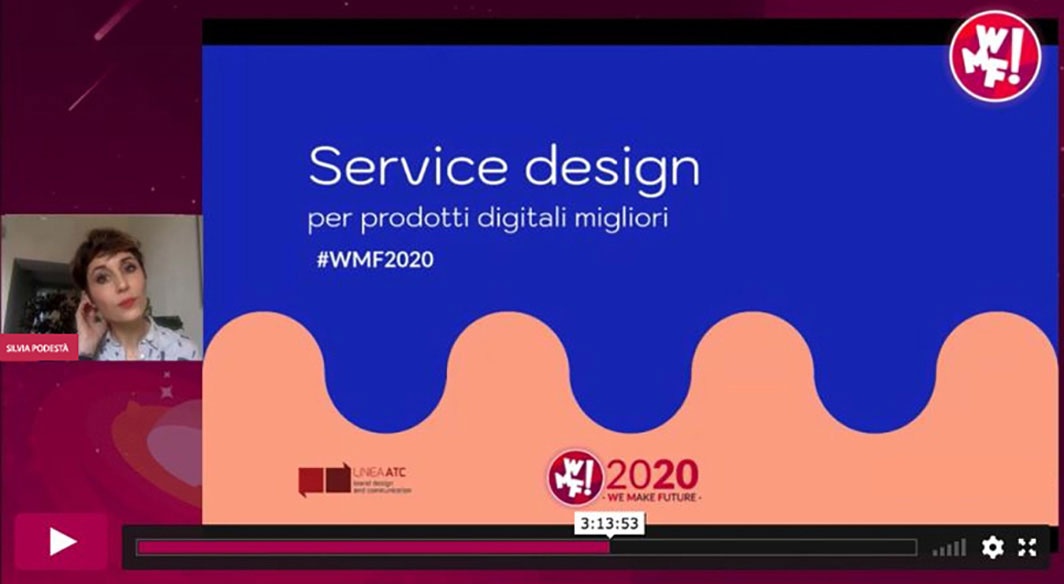
Beyond interfaces: the need of a “systemic” perspective on digital products
In a hybrid reality, times are mature for digital interfaces to go the next level, but how? The answer calls for a strategic mindset to be applied to pure UX design. A new perspective that acknowledges the role of a single interface as a touchpoint within an eco-system, made up of people, products, processes and policies.
The user experience on a single digital interface becomes truly meaningful, only when it adds up to the delivery of a whole, consistent service.

All of a sudden, service design becomes really significant
We’ve hammered home the idea of system and that brings us to service design. Service design is design applied to the ideation, implementation, orchestration and delivery of digital services. The evolution of this field of studies follows the growth of the World Wide Web (both were born in the early Nineties), and mirrors the progressive shift from an economic system strongly centred on physical products, to a more faceted one focused on the “experience” component (Pine & Gilmore, 1999), and on the extended idea of “product-service-systems” (Halen; Vezzoli; Wimmer, 2005).
Service design boasts manifold applications, mostly in the field of government services, social innovation and business operations. How about marketing?
To answer this question, we need to look at digital products in two ways.
On one hand, digital products are touchpoints within a digital strategy (a communication or branding one). This is the aspect of a digital products that mostly concerns marketing practitioners.
On the other, it is definitely also a tool that allows a company to deliver some sort of service to their users: the opportunity to make a purchase, to book a room, to kill time, to connect with other users, to learn and keep themselves... This intrinsic "instrumental" component makes any website, platform or app a potential petri dish for service design. And here’s why service design can be so relevant: whenever a digital touchpoint needs to be evaluated in terms of “human experience”, the design approach is particularly fit for purpose.
Human-centricity in an inevitable convergence of marketing and design
Five ingredients of service design make it fit for purpose (Lawrence, Schneider, Stickdorn, Hormess This is Service Design Doing: 2018):
• holistic -- holistc – it aims at generating co-value, by keeping into account every stakeholder’s perspective.
• real -- its stress on the “discovery” component of design can get us so much further toward understanding how a digital solution is going to be relevant, or at the contrary fail, in the current market environment. Discovery backs any solution up with real, validated data about our target audience.
• sequential -- the service is orchestrated as a series of interrelated actions, allowing for a better, end-to-end management of the whole process.
• iterative -- implementation is the outcome of a cyclical process of continuous experimentation, test, validation and improvement.
• human-centricity -- once it was User Centricity that design was all about (Lawrence, Schneider, Stickdorn, Hormess This is Service Design Thinking: 2011). Today, the concept has been extended to embrace all people that contribute to the existence of the service itself. Not just the end user, also service operators, company managers, partners, suppliers and so on.
Not only is human-centricity a concept of design, it is a concept that has been creeping into marketing as well. Philip Kotler, invited to speak at the November edition of the Web Marketing Festival, introduced the expression "human-to-human marketing", which is a fascinating one, that reminds us about the progressive convergence between design and marketing on some theoretical and practical common grounds.
This speaks a lot about the increasing sophistication of our digital economy, which seems poised to become, however annoying this may sound to grumpy, old-fashioned purists, increasingly cross-disciplinary.
 Service design process
Service design process
Service design as a method for better digital project management
As all other fields of study that stem from design , Service Design too follows the methodological framework described in Tim Brown’s book “Change by design”. Its way of working follows the double diamond structure, putting together divergence and convergence moments, in a highly creativity-saturated process. The agile and speculative components of the process are a peculiar trait of service design, among other fellow disciplines.
These help a lot when dealing with the fiendishly complex digital product-services we are asked to design today. Service design can be an alternative, complementary way to traditional project management, to handle our work as digital marketers and creatives in a much more efficient, collaborative and productive way.
#servicedesign #digitalmarketing #digitalstrategy #webmarketing








